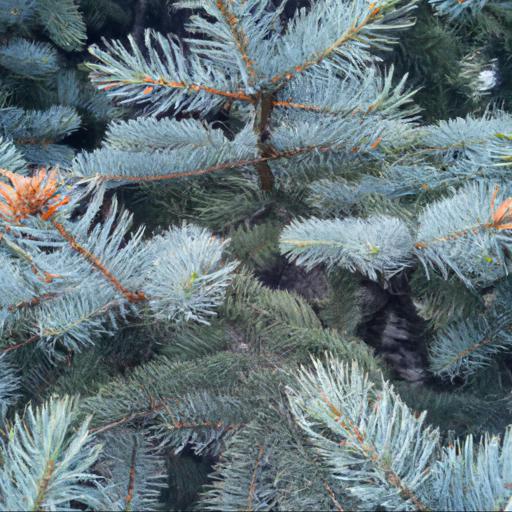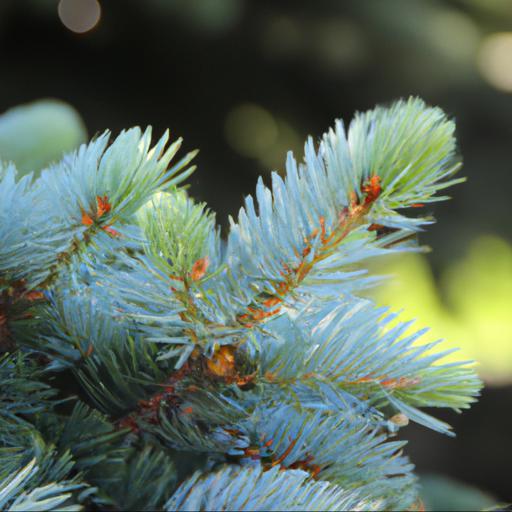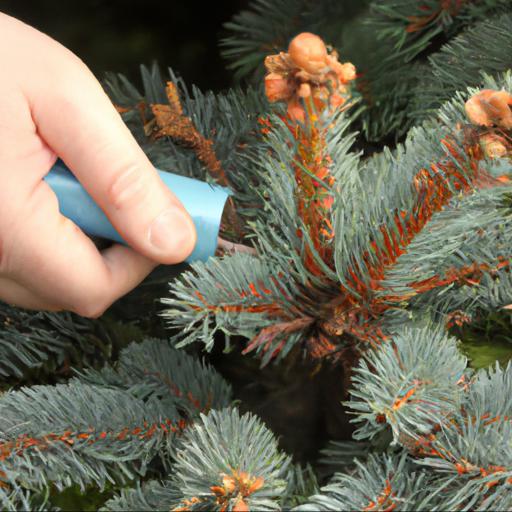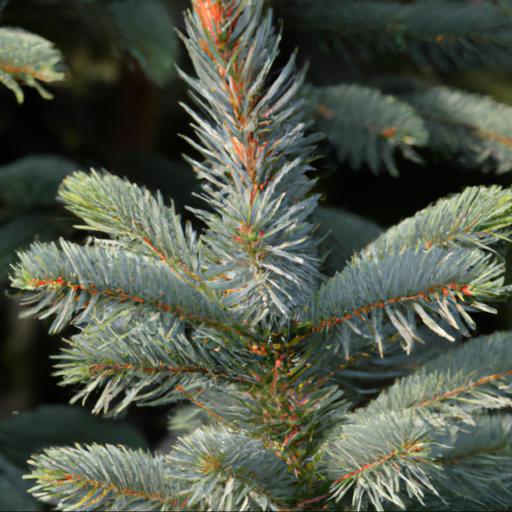Picea pungens, commonly known as the Colorado Blue Spruce, is a species of evergreen conifer native to the Rocky Mountains of North America. It is an important species for use in landscaping and is a popular choice for Christmas trees.
This tree is also known for its striking blue-green needles and its hardiness in a variety of climates. Picea pungens is a hardy species that can tolerate cold temperatures and drought, making it an ideal choice for landscaping in colder climates. It is also a great choice for windbreaks, providing protection from strong winds.
The Colorado Blue Spruce is also a great choice for those looking to add a unique, eye-catching element to their landscape.
Characteristics of picea pungens

Picea pungens – For an Evergreen Plant SpecialWhen it comes to an evergreen plant, the first thing most people think of is the Picea pungens, sometimes known as the Colorado blue spruce. The Picea pungens is a coniferous, compact evergreen tree, native to North America. Unless you live in the western United States, you’re more likely to see a Picea pungens in a residential garden than in the wild.
The unique beauty of the Picea pungens lies in the shape of the foliage and its striking blue-green hue. The needles of the Picea pungens are sharp and pointy, which make the tree stand out from other evergreens.
Its thick, deep foliage combines with a slim, inner-core trunk to give it a classic coniferous look. The hues of the foliage can range from dark blue to silver-blue, depending on the variety and time of year. The Picea pungens is a great option for small yards and tight spaces.
It is adaptable to both cold and warm climates, making it a great option for many locations. It is also very low-maintenance and can thrive with just a light pruning of the lower branches or a quick trim when it is necessary.
In addition, it is generally very disease and pest-resistant, which allows it to live longer. The Picea pungens is one of the most popular and recognizable evergreen trees, especially for small yards. Its unique beauty and easy maintenance make it a great tree for any type of garden.
Its rich blue-green foliage adds an air of sophistication and majesty to any garden. Plus, with a range of sizes and colors available, there is a Picea pungens that is right for any gardener.
Benefits of growing picea pungens

A well maintained Picea pungens, commonly known as the Colorado blue spruce, is a species of evergreen coniferous tree that can furnish a garden with beauty, color, and a variety of environmental benefits. These hardy trees can not only withstand extremes in temperature and climate; they also require little maintenance and provide year-round pleasure.
The soft, striking foliage of the Colorado blue spruce is an attractive feature that stands out in any garden. Its blue-green needles, arranged in a unique, asymmetrical pattern, creates texture and form unlike any other. In addition, the needles range from silver to dark, steel blue colors that provide vivid contrast all year long.
Growing Picea pungens is a great way to improve air quality around the home garden. These trees are very efficient at converting carbon dioxide into the oxygen that is necessary for life. They also disperse pollen, absorb toxic gasses like nitrogen dioxide, and can even reduce the levels of particulate matter in the air.
Moreover, with their large root systems, Picea pungens can help strengthen and protect soil from erosive forces, controlling soil temperatures and avoiding wind and water damage. They are also a source of food and refuge for birds and other wildlife, helping to create a more balanced ecosystem.
As is the case with many species of trees, they also provide shade during summer, protecting the garden’s flowers and vegetables. In sum, growing Picea pungens offers numerous benefits, not the least of which is their eye-catching beauty.
Not only do they provide excellent aesthetic appeal and add color to any garden, they also serve as a great source of protection, filtering air and keeping soil moist, while creating the perfect habitat for birds and other small creatures. All in all, this species of evergreen conifer is an excellent addition to any landscape.
How to care for picea pungens

When it comes to sprucing up landscapes, the Picea pungens is one of the most popular trees to choose from. Also known as the Colorado Blue Spruce, this evergreen is a great choice for those who want something both luxurious and low maintenance.
Here’s a guide on how to best care for your Picea pungens. The most important thing to remember is that the Picea pungens needs plenty of sunlight to be healthy and thrive. Make sure the spot you select for your tree is sunny enough, and that it’s also not in a windy or drafty spot.
Also keep in mind that your spruce needs room to grow; be sure to choose a spot that has at least 4 feet in circumference around the base of the tree. Watering is also an important part of caring for your Colorado Blue Spruce.
During the first year after planting, it should be watered once a week. Make sure the soil is evenly moist; if the soil is too wet, the roots can become waterlogged, and if the soil is too dry, the tree can suffer from dehydration. During the second year, the Picea pungens only needs to be watered once a month, or as needed during low rainfall months.
Finally, fertilizing is also key for a healthy Picea pungens. It’s best to use an acidified fertilizer specifically for spruce trees, and feed it to your tree once a year in early spring. Additionally, during the winter, it’s smart to cover your Colorado Blue Spruce with a frost blanket when temperatures dip below 15 F.
With this care, your spruce should stay both healthy and beautiful.
Common problems with picea pungens
Picea pungens, also known as the Colorado blue spruce, is an unmistakable conifer found in many gardens throughout the UK. Its striking blue-green needles and pyramidal growth make it an attractive choice for those who want to add an eye-catching focal point to their outdoor space.
While this conifer is reliably hardy and easy to care for, there are a few common issues that may arise. Maintaining a healthy, consistent colour is vital, but this conifer can sometimes become more yellowish as it matures, as well as during winter months when light levels are lower. This is totally normal and can be addressed by using a simple conifer tone spray.
This helps bring back the classic blue-green hue of Picea pungens. Another common issue with this conifer is the appearance of scale insects.
These pest insects – which look like small brown or grey spots – can cause defoliation or discolouration of the foliage, so it’s important to keep a close eye out for them. If found, use a suitable insecticide to treat the infestation. Finally, Picea pungens is prone to fungal needle blights, which can cause the needles to turn yellow or brown before they drop off the tree.
Fortunately, there are preventative sprays available to keep this fungal disease at bay. By understanding and addressing these common issues, you can ensure your Colorado blue spruce remains a stunning feature in your garden for years to come.
Our video recommendation
Final Touch
Picea pungens, commonly known as the Colorado blue spruce, is a hardy evergreen conifer native to the Rocky Mountains. It has a pyramidal shape and can reach heights of 40 to 60 feet, with a spread of 20 to 30 feet. Its silver-blue needles have a sharp point, and its cones are 4 to 8 inches long.
The Colorado blue spruce is a popular choice for windbreaks, screens, and privacy hedges, and it is also used as an ornamental tree in parks and gardens. It is a hardy species that can tolerate a wide range of soil and climate conditions, making it an ideal choice for many landscaping projects.
FAQ
What is the scientific name of the Picea pungens tree?
The scientific name of the Picea pungens tree is Picea pungens.
What are the common names for the Picea pungens tree?
The common names for the Picea pungens tree are Colorado blue spruce, blue spruce, and white spruce.
Where is the Picea pungens tree native to?
The Picea pungens tree is native to the Rocky Mountains in North America.
What are the characteristics of the Picea pungens tree?
Picea pungens, also known as the Colorado blue spruce, is a coniferous evergreen tree that is native to the Rocky Mountains of North America. It has a pyramidal shape with a conical crown and a straight trunk. Its needles are stiff, sharp, and blue-green in color. It can reach heights of up to 50 feet and is tolerant of cold temperatures. It is also drought tolerant and can tolerate a wide range of soil types.
How tall can the Picea pungens tree grow?
Picea pungens trees can grow up to 50 feet tall.
What type of soil does the Picea pungens tree prefer?
Picea pungens trees prefer well-drained, acidic soil with a pH of 5.5-6.5.

